Home>diy>Building & Construction>How To Finance Building A House


Building & Construction
How To Finance Building A House
Modified: March 2, 2024
Learn how to finance your building construction project and make your dream house a reality. Discover the best financing options and expert tips.
(Many of the links in this article redirect to a specific reviewed product. Your purchase of these products through affiliate links helps to generate commission for Storables.com, at no extra cost. Learn more)
Introduction
Building a house is a dream that many people aspire to fulfill. It provides the opportunity to create a personalized space that meets their unique needs and desires. However, financing such a project requires careful planning and consideration. In this article, we will explore the different financing options available to individuals looking to build their dream homes.
When it comes to financing a building project, there are several factors to take into account, such as determining a budget, getting pre-approved, securing a construction loan, managing costs, and understanding interest rates. By understanding these key aspects, you can navigate the financing process with confidence and ensure the success of your building project.
Before diving into the financing options, it’s important to note that building a house is a complex and time-consuming endeavor. It involves multiple stages, from initial planning and design to construction and final touches. This process requires careful coordination among various parties, including architects, contractors, and suppliers.
Now, let’s explore the different steps involved in financing the building of your dream house.
Key Takeaways:
- Careful planning, budget determination, and pre-approval are crucial for financing a dream house. Understanding interest rates, managing costs, and working closely with a lender are essential for a successful building project.
- Factors such as credit history, income, and property appraisal can impact the financing process. Understanding the timeline and key milestones of building a house is vital for effective planning and seamless construction.
Read more: How To Build A Shed House
Choosing a Financing Option
When it comes to financing the construction of your dream house, there are several options available to consider. The choice of financing option depends on various factors such as your financial situation, credit history, and future plans. Let’s take a look at some common financing options:
- Traditional Mortgage: If you already own a piece of land and plan to construct your house on it, a traditional mortgage might be a suitable option. With a traditional mortgage, you can secure financing based on the appraised value of the land and the estimated construction costs.
- Construction Loan: A construction loan is specifically designed for building projects. It provides funds in stages as the construction progresses. With a construction loan, you have the flexibility to borrow only what you need at each stage of the building process. Once the construction is complete, the loan can be converted into a traditional mortgage.
- Home Equity Loan: If you already own a home and have substantial equity built up, you can consider a home equity loan to finance your new construction project. This type of loan allows you to borrow against the value of your home and use the funds for building your new house.
- Personal Loan: For smaller building projects or renovations, a personal loan might be a viable option. Personal loans are typically unsecured loans that can be obtained from banks or online lenders. However, keep in mind that interest rates for personal loans tend to be higher compared to mortgage or construction loans.
- Builder Financing: Some builders offer financing options directly to their customers. This can be a convenient option, as it eliminates the need to work with separate lenders. However, it’s important to thoroughly review the terms and conditions of such financing agreements and ensure that they align with your financial goals.
Each financing option has its pros and cons, so it’s crucial to carefully evaluate your financial situation and future plans before making a decision. Consulting with a financial advisor or mortgage specialist can provide valuable insights and help you select the best financing option for your building project.
Once you have chosen a financing option, the next step is to determine your budget and get pre-approved for a loan, which will be discussed in the following sections.
Determining Your Budget
Before embarking on any construction project, it is essential to determine your budget. Having a clear understanding of your financial capabilities will help you make informed decisions and avoid any potential financial strain during the building process.
To determine your budget, consider the following factors:
- Assess your finances: Take a close look at your current financial situation, including your income, savings, and outstanding debts. Evaluate how much you can comfortably allocate towards building your house without jeopardizing your financial stability.
- Consider future expenses: Take into account any upcoming financial commitments, such as education expenses, retirement savings, or other major purchases. Ensure that your budget for building a house aligns with your long-term financial goals.
- Factor in contingency: It’s advisable to include a contingency fund in your budget to account for unexpected expenses or cost overruns that may arise during the construction process. A general rule of thumb is to allocate an additional 10-20% of the total project cost for contingencies.
- Consult a professional: Seek advice from a financial advisor or a mortgage specialist who can provide insights into your financial situation. They can help you determine an appropriate budget range based on your income, expenses, and future financial goals.
Once you have determined your budget, it is crucial to stick to it throughout the construction process. This will help you avoid any financial strain and ensure that the project remains within your means.
Additionally, it’s important to note that budgeting for a building project involves more than just the construction costs. Consider other expenses such as permits, architect fees, land surveys, insurance, and furnishing costs. Ensure that these costs are factored into your budget to avoid any surprises along the way.
By being thorough in your budgeting process, you can approach your building project with confidence, knowing that you are financially prepared for the journey ahead. In the next section, we will look at the importance of getting pre-approved for a loan.
Getting Pre-Approved
Before you begin the construction process, it is crucial to get pre-approved for a loan. Being pre-approved gives you a clear understanding of how much financing you can secure, enabling you to plan and budget your project effectively.
Here’s what you need to know about the pre-approval process:
- Gather your financial documents: Lenders require specific financial documents to assess your eligibility for a loan. These may include income statements, bank statements, tax returns, and employment history. Gather these documents in advance to streamline the pre-approval process.
- Choose a lender: Research and compare different lenders to find one that offers favorable terms and interest rates. Consider factors such as reputation, customer reviews, and their experience with construction loans.
- Submit your application: Complete the lender’s pre-approval application and submit it along with the required financial documents. The lender will evaluate your application, assess your creditworthiness, and determine the loan amount you can be pre-approved for.
- Receive pre-approval letter: If your application is successful, the lender will provide you with a pre-approval letter stating the loan amount you are eligible for. This letter serves as proof of financing and demonstrates your seriousness as a buyer to home builders, contractors, and suppliers.
Getting pre-approved for a loan offers several benefits. Firstly, it allows you to confidently approach home builders and negotiate contracts, knowing that you have the financial backing to proceed. It also enables you to streamline the construction process by having a defined budget in mind, eliminating any ambiguity in the planning stages.
Furthermore, being pre-approved helps you avoid wasting time and effort on projects that are beyond your financial reach. It allows you to focus on properties and building plans that align with your budget and loan eligibility.
Remember, pre-approval is not a guarantee of funding. The final loan approval will occur once you have selected a property, finalized the building plans, and met all the lender’s requirements. However, the pre-approval process provides valuable insight and guidance as you move forward with your construction project.
In the next section, we will discuss the importance of savings and down payment when it comes to financing the construction of your dream house.
Savings and Down Payment
When it comes to financing the construction of your dream house, your savings and down payment play a crucial role. Having a substantial amount of savings and providing a significant down payment can positively impact your financing options and overall construction process.
Here’s why savings and a down payment matter:
- Improved loan eligibility: Lenders consider your savings and down payment as an indicator of your financial stability and commitment to the project. Having a significant amount of savings and a larger down payment increases your chances of qualifying for a loan and securing favorable loan terms and interest rates.
- Reduced loan amount: By contributing a larger down payment, you can reduce the total loan amount needed to finance your construction project. This results in lower monthly mortgage payments and potentially lower interest costs over the life of the loan.
- Lower mortgage insurance: In some cases, if your down payment is less than 20% of the home’s value, lenders may require you to pay for private mortgage insurance (PMI). By providing a larger down payment, you can potentially avoid or minimize the need for PMI, saving you money in the long run.
- Greater financial security: Having substantial savings acts as a safety net during the construction process. It provides a cushion to cover unforeseen expenses, cost overruns, or delays that may arise during the building phase. This ensures that your project can proceed without interruptions or financial stress.
Building a house requires careful financial planning, and it’s advisable to start saving well in advance of your construction project. Set a savings goal and allocate a portion of your income towards your building fund. Consider automating your savings by setting up regular transfers from your paycheck to a dedicated savings account.
Additionally, explore ways to maximize your savings by reducing unnecessary expenses and finding opportunities for additional income. Every dollar saved and allocated towards your down payment can make a significant difference in the overall financing of your dream house.
Remember, every building project and individual’s financial situation is unique. It is essential to assess your savings and down payment capabilities and determine the most suitable approach for your specific circumstances. Consulting with a financial advisor or mortgage specialist can provide valuable insights and guidance tailored to your needs.
In the next sections, we will dive into securing a construction loan and working with a lender to bring your dream house to life.
Read more: How To Budget For Building A House
Securing a Construction Loan
A construction loan is specifically designed to provide funding for the construction of a new home. Securing this type of loan is a crucial step in financing your dream house, as it enables you to access the necessary funds throughout the building process.
Here are the key steps to secure a construction loan:
- Research lenders: Start by researching and comparing different lenders that offer construction loans. Look for reputable lenders with experience in construction financing and favorable terms.
- Meet lender requirements: Lenders have specific requirements for construction loans, such as credit score, income verification, and a detailed construction plan. Ensure you meet these requirements before applying for the loan.
- Provide documentation: Prepare and submit the necessary documentation to support your loan application. This may include building plans, cost estimates from contractors, your financial statements, and other relevant paperwork as requested by the lender.
- Work with an appraiser: The lender may require an appraisal of the proposed construction project to determine its value. Engage an appraiser who specializes in residential construction to conduct a thorough evaluation.
- Approval and terms: Once your loan application is reviewed and approved, the lender will provide you with the terms and conditions of the loan, including interest rates, repayment terms, and any applicable fees. Review these terms carefully before proceeding.
- Loan closing: After agreeing to the terms, you will go through the loan closing process, similar to a traditional mortgage. This involves signing legal documents and paying any required fees or down payments to finalize the loan agreement.
It’s important to note that construction loans differ from traditional mortgages in terms of disbursement. Instead of receiving the full loan amount upfront, construction loans are typically disbursed in stages known as “draws.”
During the construction process, the lender will conduct periodic inspections to ensure that the work is progressing according to plan. As each stage of construction is completed, funds will be released in predetermined increments to cover the costs. This allows you to pay the contractors and suppliers as the project moves forward.
Furthermore, it’s essential to communicate regularly with your lender to provide updates on the construction progress and address any concerns or changes that may arise during the building process.
Securing a construction loan provides the financial foundation needed to turn your dream house into a reality. By carefully following the steps outlined and working closely with your lender, you can ensure a smooth and successful building experience.
In the next section, we will explore the importance of working with a lender throughout the construction process.
Working with a Lender
When it comes to financing the construction of your dream house, building a strong relationship with your lender is crucial. Effective communication and collaboration with your lender will ensure a smooth and successful construction process.
Here are some key aspects of working with a lender:
- Regular communication: Maintain open and regular communication with your lender throughout the construction process. Keep them informed about the progress and any changes or challenges that may arise.
- Timely documentation: Provide any required documentation promptly to your lender. This includes invoices from contractors and suppliers, change orders, and any other financial paperwork related to the construction process. Timely submission of these documents ensures efficient processing of payments.
- Updates on construction progress: Keep your lender informed about the progress of the construction project. This helps them monitor the disbursement of funds and ensure that the project is on track. Inform your lender of any delays or unexpected circumstances that may impact the timeline or budget.
- Coordination with the lender: Coordinate with your lender on the timing and process for fund disbursement. Typically, funds are released in stages, known as “draws,” to cover the costs of construction. Collaborate with your lender to ensure a smooth and timely disbursement of funds.
- Adherence to budget: Stay within your budget and avoid unnecessary changes that may impact the loan agreement. Consult with your lender before making significant alterations to the project plans or incurring additional costs.
- Addressing concerns or issues: If you encounter any concerns or issues during the construction process, reach out to your lender for guidance and assistance. They can provide valuable insights and support in resolving any financial or loan-related matters.
Remember, your lender is a valuable resource and partner in your construction project. They have the expertise to guide you through the financial aspects of building your dream house. Building a strong relationship with your lender will help ensure transparency, efficiency, and a successful construction experience.
By maintaining clear communication, submitting required documentation on time, and coordinating closely with your lender, you can navigate the financing process with ease and confidence.
In the next section, we will delve into the concept of construction progress payments and their importance in financing your building project.
Consider getting a construction loan, which provides funds in stages as the house is built. This can help manage costs and avoid paying interest on the full loan amount until the house is complete.
Construction Progress Payments
Construction progress payments are a crucial aspect of financing your building project. Also known as “draws,” these payments allow you to fund the construction process in stages based on the progress made. Understanding how construction progress payments work is essential to effectively manage your finances during the building process.
Here’s how construction progress payments typically function:
- Draw schedule: Your lender will establish a draw schedule, which outlines the stages at which funds will be disbursed. Typically, these stages coincide with key milestones in the construction process, such as completion of foundation work, framing, roofing, electrical and plumbing installation, and final finishes.
- Inspections and approvals: Before each progress payment is made, the lender may require inspections and approvals from relevant parties, such as the appraiser or building inspector. These inspections ensure that the work has been completed satisfactorily and in accordance with the agreed-upon plans and specifications.
- Payment request: As each stage is completed, the contractor or builder will submit a payment request to the lender. This request includes invoices for the completed work and any supporting documentation required by the lender.
- Lender’s review: The lender will review the payment request, ensuring that it aligns with the approved draw schedule and that the required documentation is provided. This review process may involve site visits to inspect the completed work.
- Release of funds: Once the lender approves the payment request, funds will be released to the contractor or builder to cover the costs of the completed work. The amount released will be a predetermined percentage of the total construction loan based on the draw schedule.
- Continuation of the process: The construction progress payment process continues until the project is completed. As each stage is finished and approved, additional funds will be disbursed to cover the subsequent construction phases.
Construction progress payments provide several advantages. They ensure that funds are allocated as the work progresses, allowing you to pay contractors and suppliers in a timely manner. This minimizes the risk of cash flow issues or delays in the construction process.
However, it’s important to note that construction progress payments are based on completed work and approved inspections. Therefore, it’s crucial to closely monitor and ensure the quality and progress of the construction at each stage. Effective project management and open communication with your contractor or builder will help ensure that the work meets the required standards and stays on track.
By understanding the process of construction progress payments and working closely with your lender and construction team, you can effectively manage your finances throughout the building process and bring your dream house to life.
Next, let’s explore the concept of interest rates and their importance in financing your building project.
Understanding Interest Rates
Interest rates play a significant role in financing your building project. When obtaining a construction loan or mortgage, it’s essential to understand how interest rates work and how they can impact your overall financial commitment. Here’s what you need to know about interest rates:
Fixed vs. Variable Rates: Interest rates can be either fixed or variable. A fixed interest rate remains the same throughout the duration of the loan, providing stability in your monthly payments. In contrast, a variable interest rate may fluctuate over time based on market conditions, potentially leading to changes in your monthly payment amount.
Factors Affecting Interest Rates: Interest rates are influenced by various factors, including the current state of the economy, inflation rates, the overall credit market, and the borrower’s creditworthiness. Lenders assess these factors when determining the interest rate offered to borrowers.
Credit Score and Interest Rates: Your credit score plays a vital role in determining the interest rate you will be offered. A higher credit score generally leads to more favorable interest rates, as it indicates a lower risk of defaulting on the loan. Maintaining a good credit score by making timely payments and managing your debts can help secure better interest rates.
Lock-in Period: When obtaining a construction loan or mortgage, consider whether the lender offers a lock-in period for the interest rate. A lock-in period guarantees that the interest rate will remain the same for a specified period, typically ranging from a few months to several years. This protects you from potential rate increases during the construction phase.
Mortgage Rate Types: When transitioning from a construction loan to a mortgage, you may have the option to choose between various mortgage rate types, such as fixed-rate mortgages and adjustable-rate mortgages (ARMs). Educate yourself on the pros and cons of each type to make an informed decision based on your financial goals and risk tolerance.
Interest Rate Impact on Budget: Fluctuations in interest rates can impact your monthly mortgage payments and overall budget. Higher interest rates may result in higher monthly payments, potentially affecting your ability to afford other expenses or impacting your cash flow. Understanding the potential impact of interest rate changes will help you properly manage your finances.
Consultation and Rate Comparison: It’s important to consult with multiple lenders and compare interest rates and loan terms to find the most favorable option for your specific financial situation. Each lender may offer different rates, so conducting thorough research and seeking professional advice can help you secure the best interest rate available.
By understanding how interest rates work and their potential impact, you can make informed decisions when it comes to financing your building project. Consider your financial goals, risk tolerance, and long-term plans when evaluating interest rates and selecting a loan option that aligns with your needs.
Next, let’s explore strategies for managing costs and expenses during the construction process.
Read more: How To Build A House Out Of A Metal Building
Managing Costs and Expenses
Managing costs and expenses is essential when financing the construction of your dream house. Proper budgeting and cost management can ensure that your project stays within your financial capabilities and prevent any unwelcome surprises along the way. Here are some strategies to help you effectively manage costs and expenses during the construction process:
- Create a detailed budget: Develop a comprehensive budget that outlines all anticipated costs, including materials, labor, permits, and professional fees. Be sure to include a contingency fund to account for unforeseen expenses.
- Obtain multiple quotes: Seek quotes from multiple contractors, suppliers, and professionals involved in the construction process. Compare prices, services, and quality to ensure you get the best value for your money.
- Stick to the planned designs: Minimize changes to the original design and plan. Changes during construction can lead to additional costs and delays. Have a clear vision from the start and make decisions before construction begins.
- Regularly review progress and expenses: Monitor the progress of the construction project and review the associated expenses regularly. This helps identify any areas where costs may be escalating or potential savings can be made.
- Negotiate with suppliers and contractors: Don’t be afraid to negotiate prices with suppliers and contractors. Explore options for bulk discounts or consider different materials that provide cost savings without compromising quality.
- Consider energy-efficient options: Incorporating energy-efficient features and materials during construction can lead to long-term cost savings. Energy-efficient appliances, insulation, and lighting can reduce utility bills and increase the value of your home.
- Monitor and control change orders: Change orders can result in extra costs and delays in construction. Carefully review and understand the impact of any change orders before approving them. Minimize unnecessary changes to stay within your budget.
- Regular communication with the builder: Maintain open and transparent communication with your builder. Clarify any financial concerns or queries promptly and ensure that all parties are aligned on budget expectations.
- Track expenses and receipts: Keep track of all expenses and receipts related to the construction project. This documentation is essential for tax purposes and can help with future warranty claims or refinancing.
By implementing these strategies and staying actively involved in managing costs and expenses, you can maintain financial control throughout the construction process. Regular monitoring and open communication with your builder and other professionals will ensure that your project stays on track financially.
Remember, proper cost management not only keeps your project within budget but also provides peace of mind and allows you to fully enjoy the realization of your dream home.
In the next section, we will discuss factors that can affect the financing of your building project.
Factors Affecting Financing
When it comes to financing your building project, several factors can impact your ability to secure a loan and the terms you’ll be offered. Understanding these factors is essential to navigate the financing process successfully. Here are some key factors that can affect the financing of your building project:
- Credit history: Your credit history plays a significant role in the financing process. Lenders review your credit score and credit report to assess your creditworthiness. A higher credit score generally leads to more favorable loan terms and interest rates.
- Income and debt-to-income ratio: Lenders evaluate your income to determine if you can afford the loan payments. They also consider your debt-to-income ratio, which compares your monthly debt obligations to your income. A lower debt-to-income ratio indicates a better ability to manage additional loan payments.
- Loan-to-value ratio: The loan-to-value (LTV) ratio compares the loan amount to the appraised value of the property. A lower LTV ratio indicates a lower level of risk for the lender and may result in more favorable loan terms. Consider providing a higher down payment to achieve a lower LTV ratio.
- Financial documentation: Lenders require certain financial documents, such as tax returns, bank statements, and proof of income, to verify your financial stability and ability to repay the loan. Ensure you have these documents readily available for the loan application process.
- Property value and appraisal: The value of the property and the appraisal conducted by a professional appraiser are important factors in securing financing. Lenders carefully consider the appraised value to determine the loan amount they are willing to provide.
- Economic conditions: Economic conditions, such as interest rates and the overall state of the housing market, can impact the availability and terms of borrowing. Stay informed about economic trends that may affect the financing landscape.
- Location and market factors: The location of the property and market conditions in the area can also influence financing. Lenders may consider factors such as the desirability of the neighborhood, local property values, and market stability when assessing loan applications.
- Builder’s reputation and experience: If you’re working with a builder, their reputation and experience can influence financing. Lenders may review the builder’s track record, certifications, and past performance to evaluate the risk associated with the project.
Understanding these factors allows you to proactively address any potential challenges and position yourself more favorably during the financing process. It’s essential to maintain a strong financial profile, research lenders, and provide accurate and complete documentation to improve your chances of securing favorable financing terms.
Working with a knowledgeable lender or mortgage specialist can also provide valuable guidance and assistance as you navigate through these factors and make informed financing decisions.
In the next section, we will explore the timeline for building a house and the key milestones involved.
Timeline for Building a House
Building a house is a complex project that requires careful planning and coordination. Understanding the timeline for constructing your dream home can help you manage expectations and ensure a smooth and efficient building process. While timelines can vary depending on factors such as the size and complexity of the project, here is a general outline of the key milestones involved in building a house:
- Pre-construction: This phase involves initial planning and preparation. It includes tasks such as acquiring land, finalizing design plans, obtaining permits, and securing financing. The duration of this phase can range from a few weeks to several months.
- Site preparation: Once the necessary approvals and permits are in place, the site preparation begins. This phase involves clearing the land, grading the site, and preparing the foundation. The duration of site preparation can vary depending on factors such as the condition of the land and any necessary excavation work.
- Foundation and framing: The foundation is laid, followed by the framing of the structural skeleton of the house. This phase sets the foundation for the rest of the construction process. The duration can range from a few weeks to a few months, depending on the size and complexity of the house.
- Exterior work: Once the framing is complete, the exterior work begins. This includes roofing, siding, windows, and doors. The duration of this phase depends on factors such as the complexity of the design and the availability of materials and contractors.
- Interior work: With the exterior in place, the focus shifts to the interior of the house. This phase involves electrical and plumbing installation, insulation, drywall, flooring, and interior finishes. The duration of interior work can vary significantly based on the size and customization of the house.
- Finishing touches: In this final phase, attention is given to the finishing touches that make the house a home. This includes painting, cabinetry installation, fixture installations, and landscaping. The duration of this phase depends on the scope of work and any additional features or customization requested.
- Final inspections and occupancy: Once the construction is complete, final inspections are conducted to ensure compliance with building codes and regulations. After obtaining the necessary approvals, you can move into your new home and begin the exciting process of making it your own.
It’s important to note that the timeline for building a house can be affected by various factors, including weather conditions, availability of materials, and any unforeseen challenges that may arise during construction. Flexibility and open communication with your builder and other professionals involved in the project are key to successfully navigating any potential delays or issues.
By understanding the timeline and key milestones of building a house, you can plan and manage your project effectively. Regular communication, realistic expectations, and collaboration with your construction team will help ensure a successful and enjoyable building experience.
Next, let’s conclude our discussion on financing the construction of your dream house.
Conclusion
Building your dream house is an exciting and fulfilling endeavor, but it requires careful planning and consideration, especially when it comes to financing. By understanding the various financing options available, determining your budget, and getting pre-approved for a loan, you can set a strong foundation for your building project. Savings and providing a substantial down payment can further enhance your financial position and loan eligibility.
Securing a construction loan and working closely with a lender throughout the process will help ensure a smooth flow of funds and effective communication. Construction progress payments, tied to milestones in the building process, allow you to manage costs and expenses efficiently. Understanding interest rates and their impact on your budget allows for informed decision-making.
Strong cost management, effective communication with all parties involved, and adherence to the planned timeline are crucial for successful construction. Factors such as credit history, income, property appraisal, and economic conditions can affect the financing process. Being aware of these factors allows you to plan and position yourself more favorably.
Building a house involves multiple stages, from pre-construction planning to the final finishing touches. Understanding the timeline and key milestones helps you manage expectations and ensures a seamless process. Regular communication, flexibility, and collaboration with your construction team are vital qualities throughout the building journey.
In conclusion, financing the construction of a house requires diligent research, careful decision-making, and ongoing financial management. By following the steps outlined in this article, you can navigate the financing process with confidence and successfully bring your dream house to life. With thorough planning, effective budgeting, and a supportive team, you are well-equipped to embark on this exciting and rewarding adventure.
Frequently Asked Questions about How To Finance Building A House
Was this page helpful?
At Storables.com, we guarantee accurate and reliable information. Our content, validated by Expert Board Contributors, is crafted following stringent Editorial Policies. We're committed to providing you with well-researched, expert-backed insights for all your informational needs.
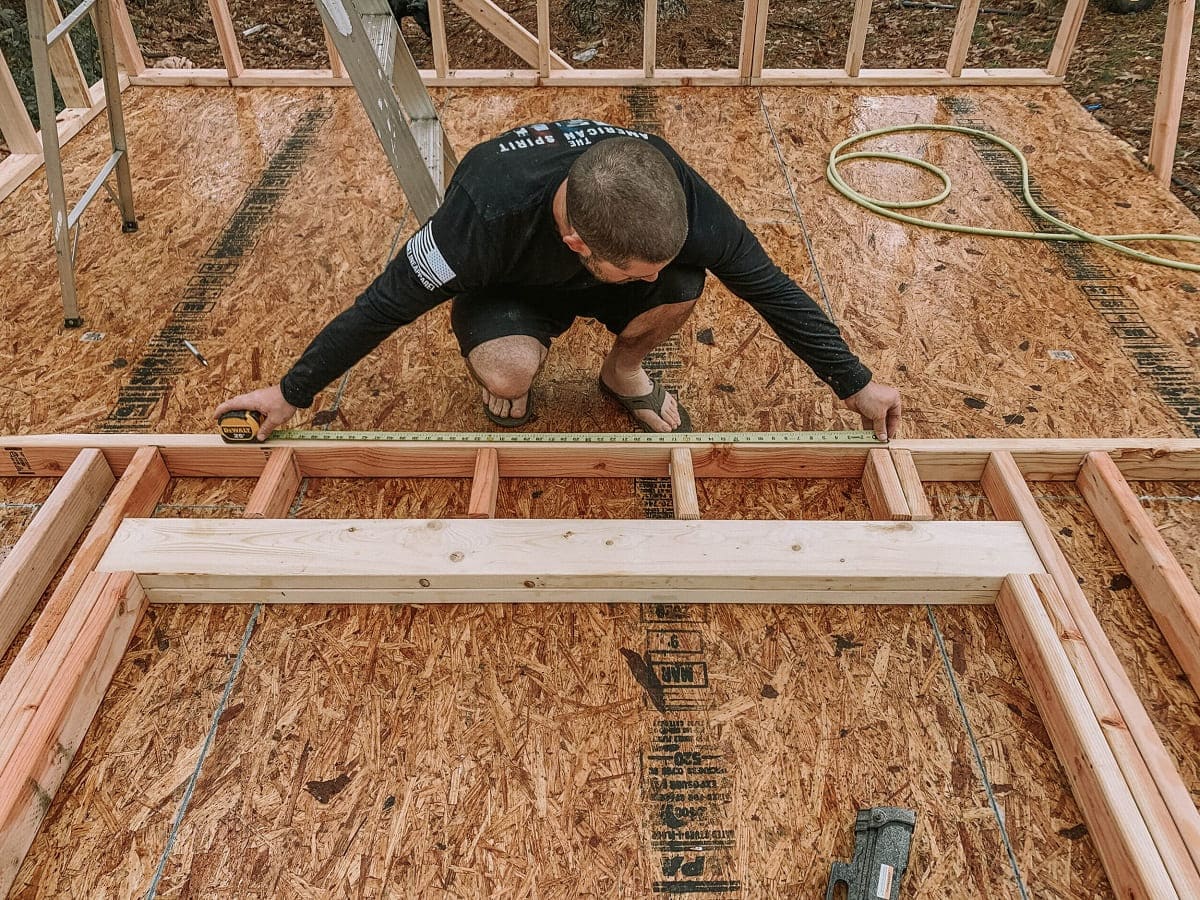

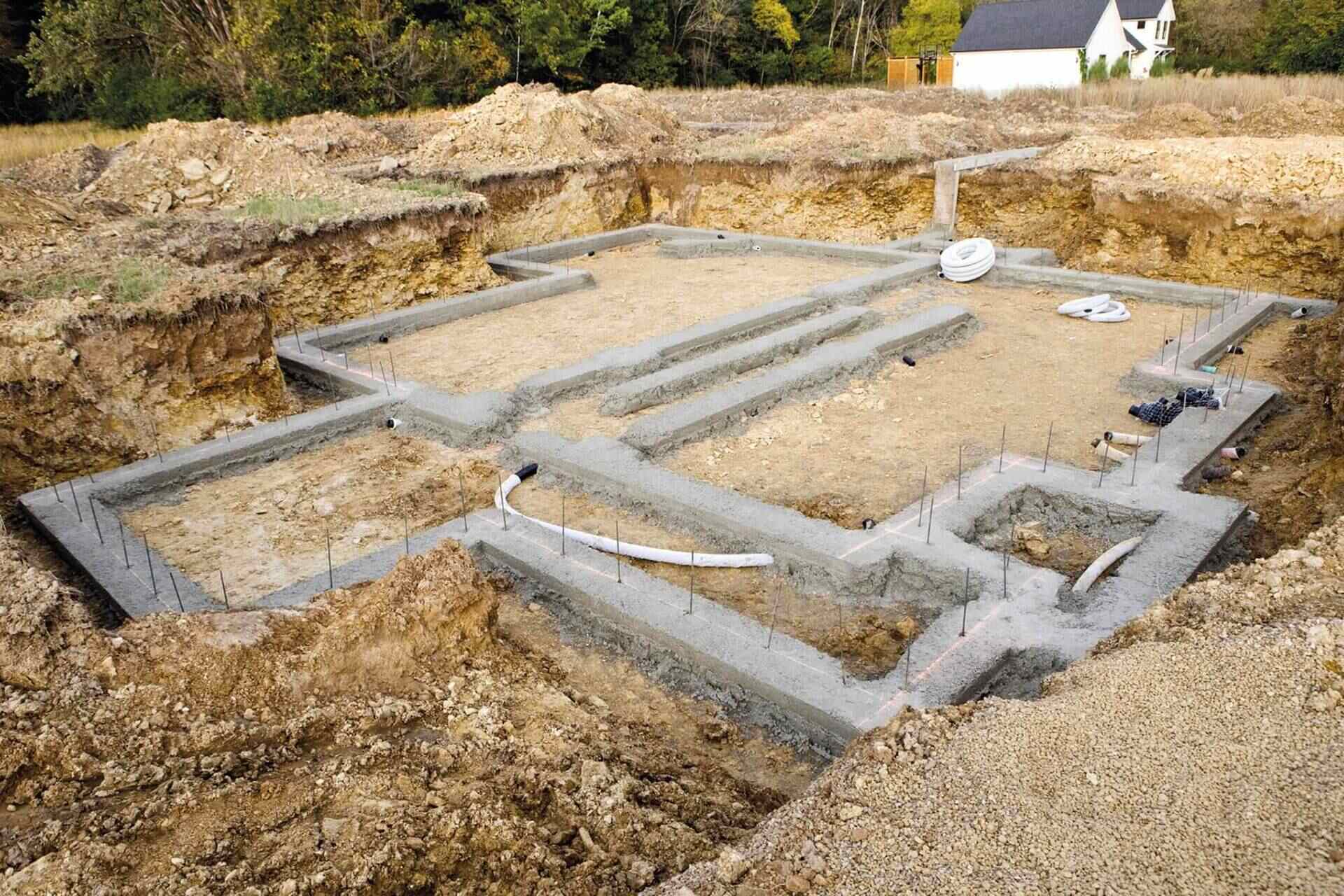





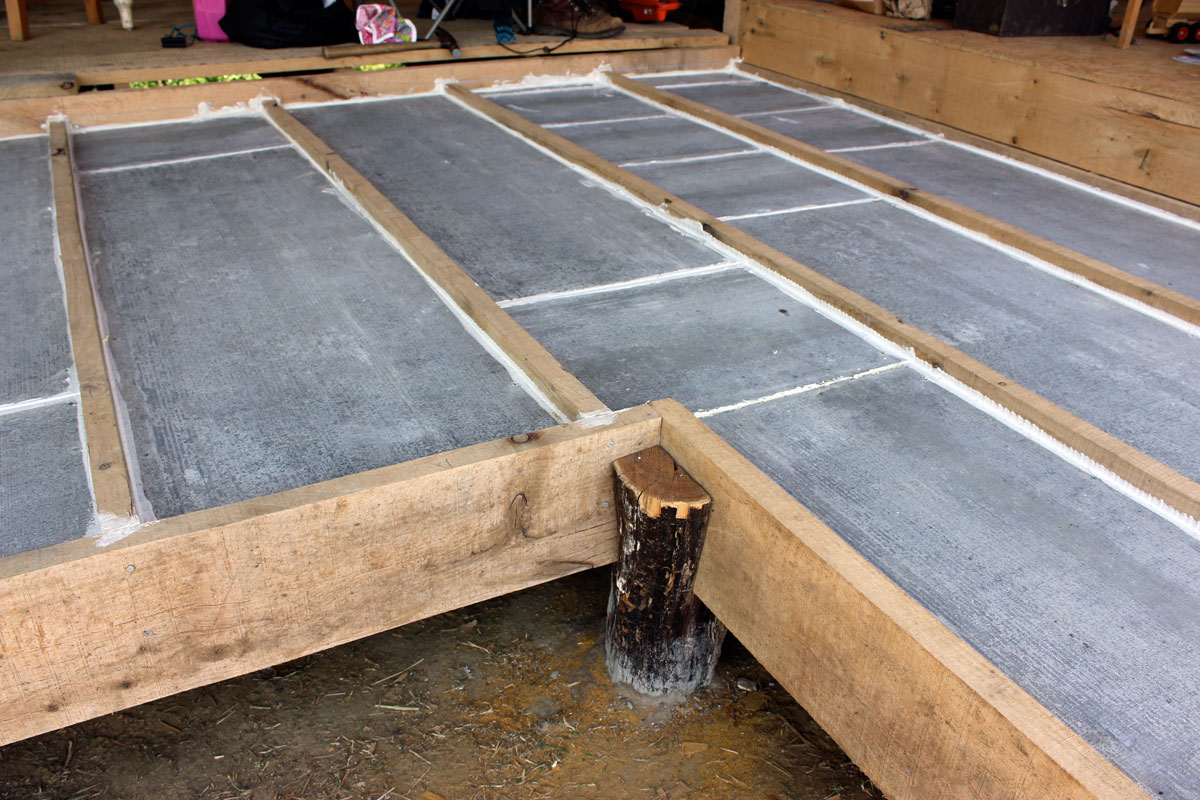
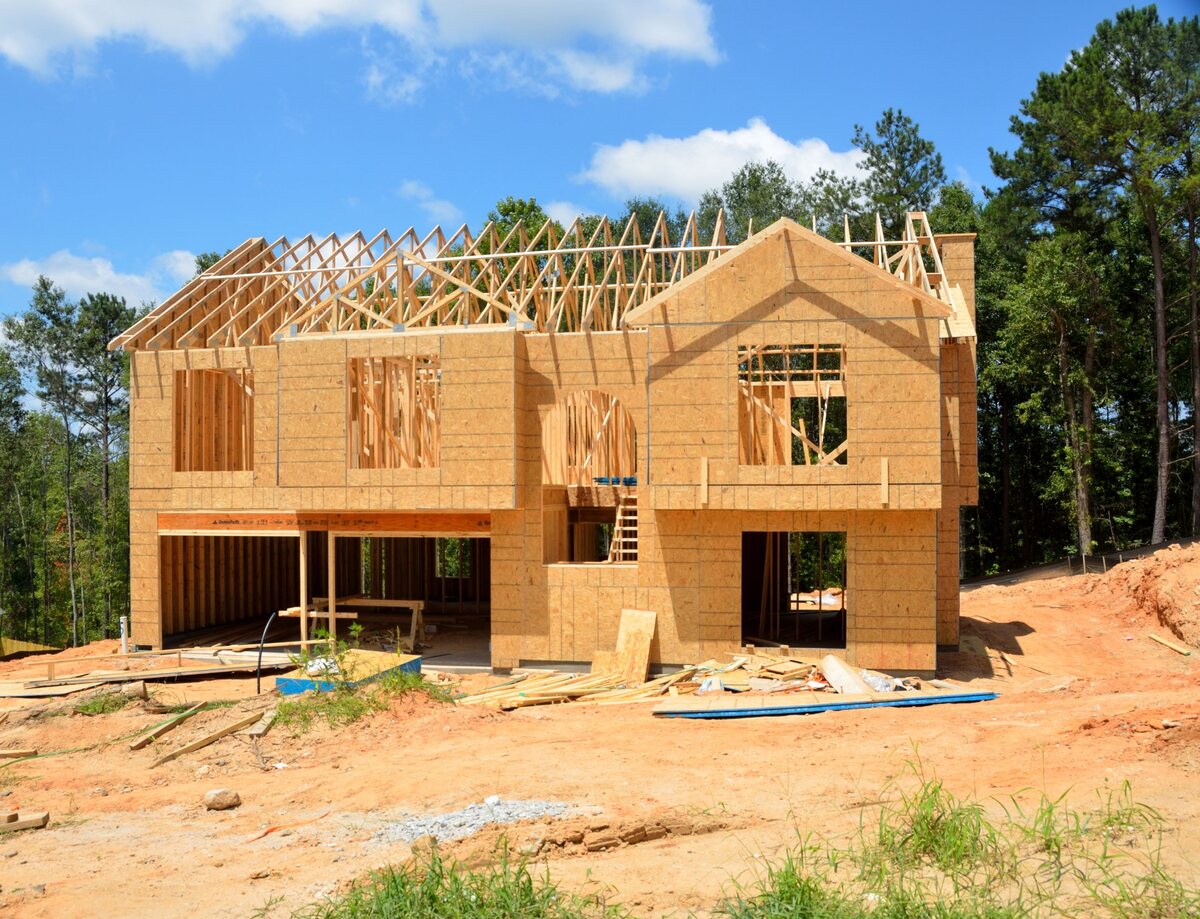

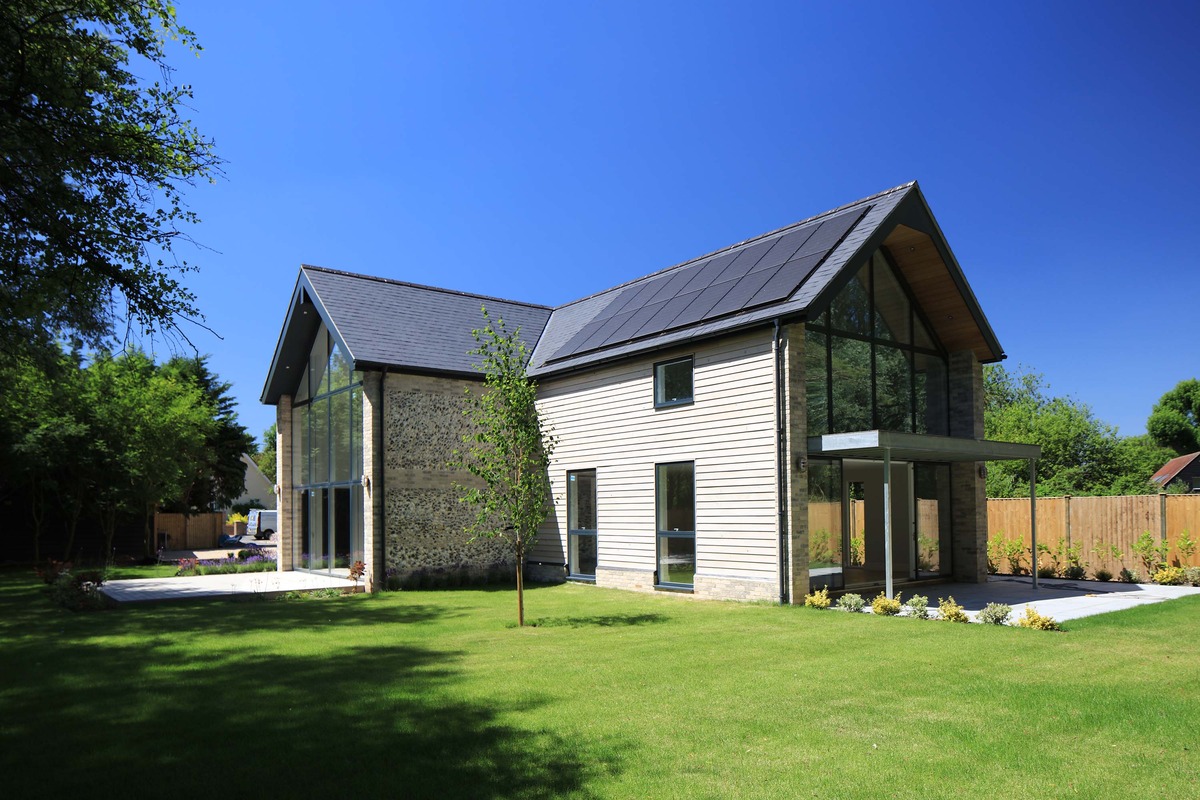
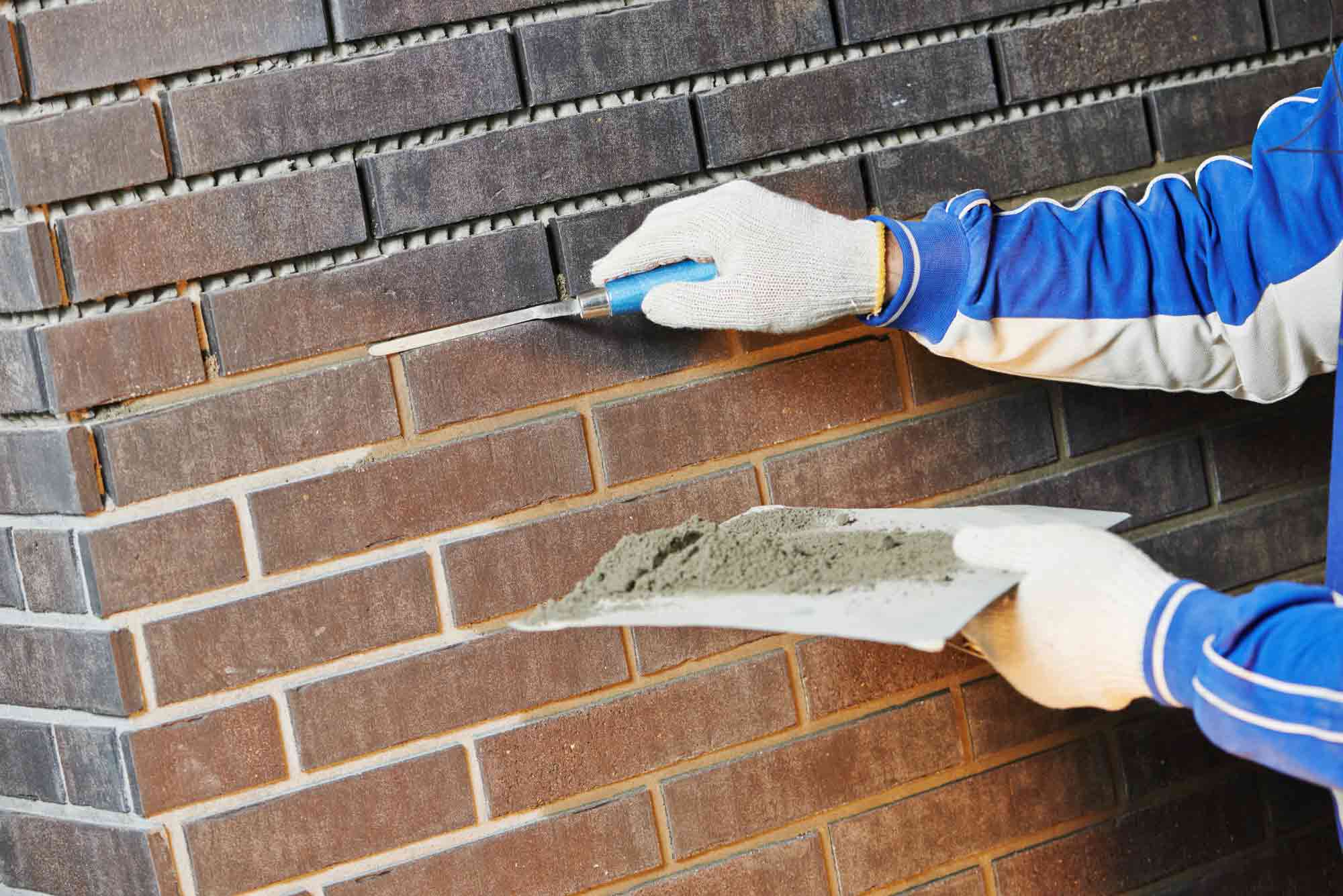

0 thoughts on “How To Finance Building A House”